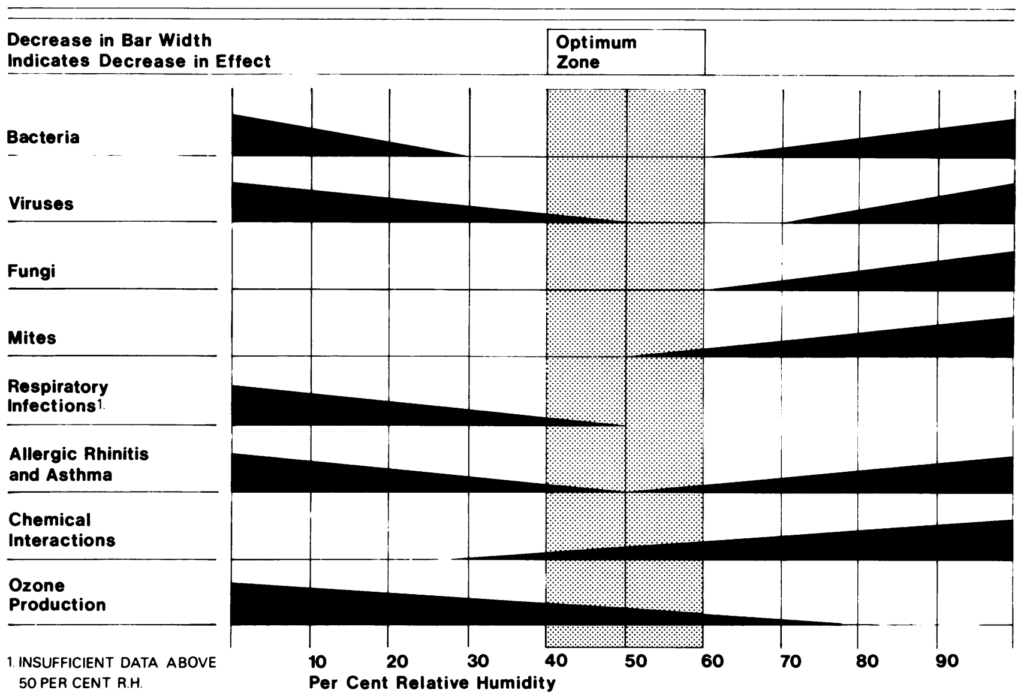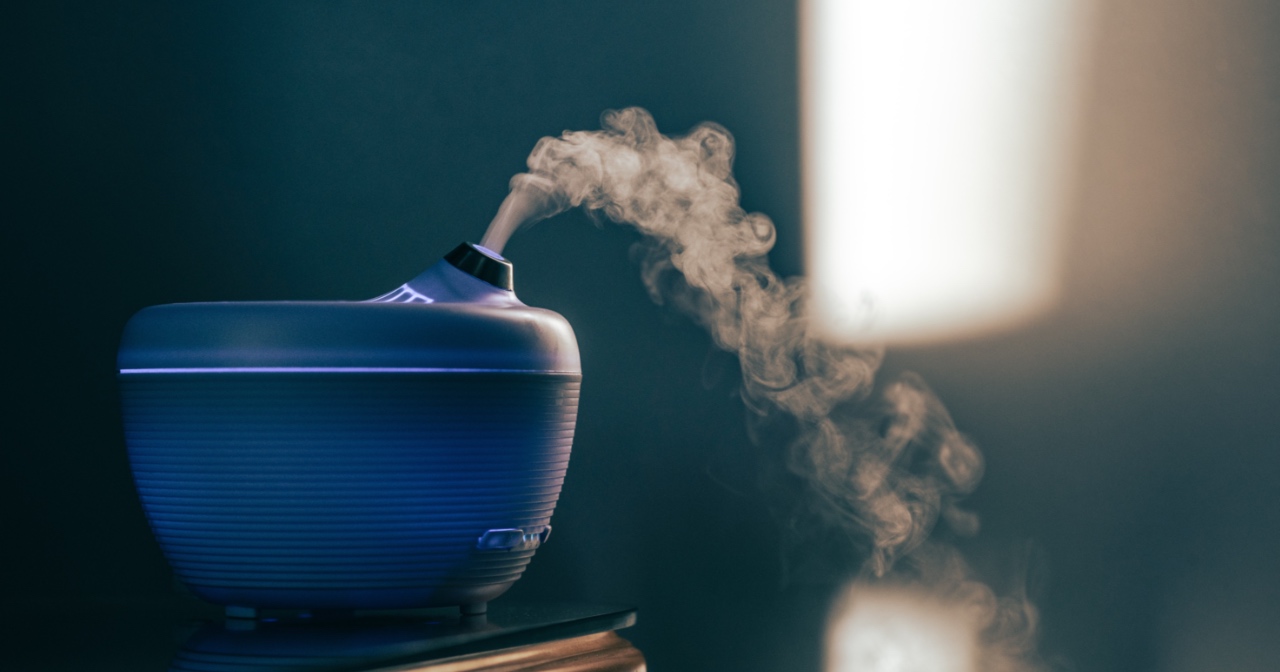Listen on: Apple Podcasts | Spotify
The temperatures dropped just enough this past week that I had to adjust our thermostats, which means the heat will start running at night.
Running the heat leads to drier air in our home, and drier air can lead to an increased risk of colds and the flu.
That got me wondering a few things: What humidity level is best for your health? Is it possible to increase your home’s humidity with an essential oil diffuser? And if the diffuser helps, could the oils help too?
Since I started reading research papers to satisfy my own curiosity, I figured I’d share what I found in case these questions made you curious, too.
How does humidity affect your risk of getting a cold or the flu?
No doubt, you’ve been told to “Put a hat on so you don’t catch a cold” when going outside in colder temperatures.
However, you getting or not getting sick might have nothing to do with the temperature and everything to do with the humidity.
Cold winter air is dry. So is heated indoor air.
As scientists have known for decades,
influenza infection rates are highest in environments with relative humidity below 40% and decrease rapidly as the relative humidity exceeds 40-50%.
Indirect Health Effects of Relative Humidity in Indoor Environments
For example, school classrooms in northern climates during colder months are often dry. Heating systems dry the air and can increase the risk of kids getting infections.
A Minnesota study found the following:
This study monitored presence, genomic copy number, and infectivity of influenza A virus in preschool classrooms during the dry winter months (low indoor humidity), which correspond with peak respiratory virus infections in Minnesota. An increase in average AH from 6.33 mb in control rooms to 9.89 mb in humidified rooms (RH ~42–45%) was associated with a significant decrease in influenza A virus presence in fomite and air samples in humidified rooms compared to control rooms.
Humidity as a non-pharmaceutical intervention for influenza A
Higher humidity reduced the concentrations of influenza A in classroom air.
Interestingly, the authors of a recent paper published in Biophysical Journal explained that a face mask’s benefit, if there is one, could be more to do with its impact on humidifying the air of the wearer than it has to do with keeping viral particles out of their nose or mouth.
The increased humidity of inspired air associated with wearing a face cover is perhaps well recognized by the public and contributes to the general feeling of mugginess, in particular when the weather is humid. Our measurements confirm that the increased humidity of inspired air is real and quite large.
They go on to say:
We propose that the increased humidity of air inspired through face masks is responsible for the lower disease severity of mask wearers.
Hydrating the respiratory tract: An alternative explanation why masks lower severity of COVID-19
If that’s the case, a ski mask or gator in winter weather could help as well, as they also humidify the air you breathe. Keep in mind that if your mask is too damp for too long, it’ll become a breeding ground for mold and some bacteria.
It’s probably better to save the mask-wearing for the cold outdoors, and find a different way to increase the humidity indoors.
Though we run multiple diffusers every day, which adds some humidity to our home’s air, I’ve never paid attention to exactly what the relative humidity is in our home. After reading about it to prepare for this blog post, I plan to purchase a hygrometer this fall and make sure our home stays humid enough.
On another note, higher vitamin D levels are also associated with lower rates of seasonal illness. I covered that in this article: Vitamin D: Deficiency Symptoms And Benefits Of Supplementation.
Isn’t high humidity bad, too?
You’ve no doubt seen the effect of high humidity in your bathroom. It grows mold.
Fungi need humidities in excess of 75% to grow, making windowsills and bathrooms the most common sources in most homes.
I’m particularly guilty of this because I rarely turn on the fan when I take a shower. As a result, we end up with mold growing in the corners of the shower. I just don’t see it since I rarely wear my contacts in the shower.
Old homes with poor airflow, condensation, or where dripping pipes can build up mold, leave those who live there more likely to get ill or develop allergies.
Mold can grow quickly around humidifiers as well as where humidity is highest in a home.
Mold makes people sick in three ways:
- Harmful immune response to the mold itself
- Mold infection
- Harmful effects caused by mold byproducts
Children are most susceptible to the effects of indoor mold, which is a common cause of asthma.
Clearly, you don’t want indoor spaces to be too humid, but they shouldn’t be too dry, either.
What is the ideal humidity for humans?
You don’t want your indoor air to be too dry, but you also don’t want it too damp. You want it just right. Like Goldilocks. What is the ideal relative humidity? 40-60%.
Outside that range, you create an environment for various pathogens to proliferate and chemical compounds to cause health problems.
The photo below comes from a 1986 paper by Arundel AV, et al., titled Indirect Health Effects of Relative Humidity in Indoor Environments.

As you can see, it isn’t good for indoor environments to be too humid or too dry. They need to be just right. Otherwise, you increase the risk of infection as well as exposure to environmental pollutants.
What’s the best way to increase indoor humidity?
A humidifier increases relative humidity the fastest. It can pump 1.5 to 12 gallons of water into the air per day. The downside is that humidifiers can spread pathogens, and can also become their breeding ground, especially if the area around the humidifier becomes excessively humid.
Essential oil diffusers help disperse water, along with essential oils, into the air, though they diffuse a lot less water. However, if you have multiple diffusers running each day, you can put a significant dent in your humidity deficit. On top of that, the diffusers diffuse essential oils, many of which have been shown to reduce the growth of pathogens.
Numerous studies show that you can reduce concentrations of airborne bacteria and viruses by diffusing essential oils, like the study below:
The results from our study demonstrated that the growth of airborne bacterial cells decreased following exposure to three different concentrations of essential oils (0.0005, 0.005 and 0.05 ppm) in a customized bio-clean room.
Analysis of the effects of essential oils on airborne bacteria in a customized bio-clean room
Hundreds of essential oils exist, and not all would have such an effect on airborne pathogens, but many do.
A study published just this year concluded:
This study has demonstrated that short interactions between aerosolized coronavirus, the bacterium E. coli or spores of the fungus A. flavus and essential oil vapours from Melaleuca genus plants can reduce the number of culturable microbial cells.
Ability of Essential Oil Vapours to Reduce Numbers of Culturable Aerosolised Coronavirus, Bacteria and Fungi
The point is, if you use multiple diffusers in your home, you can help humidify your home while making it smell better and limiting the growth of pathogens.
If you find daily diffusing doesn’t affect the humidity enough, you could add a humidifier and get the best of both worlds.
By the way, my favorite diffuser is Young Living’s Dew Drop diffuser. It’s light and easy to move around, so you can keep it next to you if you’re working from home, watching a show on the couch, or wanting to turn your bathroom into a spa for an hour. Get the Dew Drop here.
Finally, remember that this is just one way to improve your health in the winter months. If you’re serious about protecting your health and your family, take on the habits I cover in this blog post: 5 Nonnegotiable Habits For a Strong Immune System.



